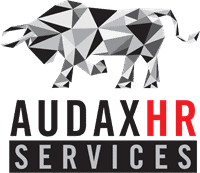The World Economic Forum says technologies like artificial intelligence (AI) will displace 75 million jobs by 2022 but will also create 133 million new roles. That’s a net gain of 58 million new jobs. To prepare workers for these new jobs, organizations will have to provide significant resources for upskilling their workforce. And employees will need to take personal responsibility for their career development in a context of rapid technological change.
How can HR professionals prepare employees and organizations for a present and future where AI is increasingly working with humans to drive business outcomes?
The ‘Right’ Mindset about AI
“HR professionals need to begin by shifting their mindsets about AI,” said Jeff Schwartz, a principal with Deloitte Consulting. “It’s not about dividing work between people and AI—it’s not an either/or proposition—but about how to create new value in new ways.” The author of the upcoming book Work Disrupted (Wiley, 2021), Schwartz compares AI’s impact to that of ATMs, beginning in the late 1970s: “ATMs didn’t eliminate the jobs of bank tellers. We’ve actually seen an increase in the number of bank tellers and in bank branches since ATMs came on the scene.”
What HR professionals need to consider is how people and AI can work together to do things better, which will likely mean reconfiguring work. As a general matter, Schwartz said, “AI is good at performing tasks in large scale, working with speed and analyzing massive amounts of data. People, on the other hand, are good with empathy, with communication, with flexibility in problem-solving.”
Acting as strategic partners with the overall business, HR professionals should be asking, “What are our potential ATMs, our complementary solutions that add value with technology and humans working together?” HR has to rethink work, the workforce and the workplace in order to create new value, explained Schwartz, “especially at a time of accelerating change when organizations and individuals need to be more agile.”
Upskilling: A Win-Win
Sean Chou, CEO of Chicago-based automation technology firm Catalytic, is a strong advocate of upskilling as a way to support both his organization and his employees in adapting to AI-enhanced ways of working. “AI means less employee time spent searching for and manually formatting data, leaving them with more time for analysis and decision-making,” Chou said. “This time savings also means that workers have more time for upskilling. That’s a win-win, since employees become more valuable to themselves and the company, while employee morale and retention are boosted.”
Gretchen Alarcon, vice president of HR Service Delivery at California-based software company ServiceNow, involves employees in the process of reconfiguring their own jobs. “We engage our employees to help design the AI-enhanced processes they will use every day, and this starts with listening and discovery to understand which existing processes need to be fixed,” she said. “After all, the people who stand to benefit the most from AI are also the ones who will know where AI is needed most.” Alarcon finds that this bottom-up approach improves the efficiency of AI in the workplace and, more importantly, “puts employees at the forefront of leading change, not being dragged along by it.”
5 Tips for Supporting Employees in Adapting to AI
We asked experts to share their best tips with HR professionals striving to support employees in upskilling and adapting to AI.
1. Be clear about your AI strategy and value. Detail how AI will positively impact employees so that they adapt to the changes with an open mind. Listen to employee concerns and quell any fears they may have by being upfront and honest about how things will change. Some employees may make the transition in no time (for instance, 43 percent of members of Generation Z say they want to use AI on the job, according to a ServiceNow survey), while others won’t be so quick to embrace the technology. HR professionals need to make sure everyone is supported, according to Alarcon.
2. Explain how AI can benefit employee experience. Show employees the transformative power of AI to handle all the administrative, repetitive tasks they dread and how it empowers them to have new and impactful experiences in the workplace. If deployed correctly, AI can serve as a journey accelerator for employees and give them the tools to go from new hire to team rock star in no time, said Anne Fulton, CEO of career experience platform Fuel50.
3. Explore ways AI can help employees beyond the elimination of manual processes. Get employees thinking about potential future benefits of AI to improve the employee experience. Imagine a near-term future where an AI bot recognizes that an employee is working on a new project and could use some more background knowledge, so an informational video gets shared to help that employee. Perhaps the AI can detect a change in an employee’s mood and alert a manager to suggest a longer lunch break. Keep exploring the multiple ways AI can add value, Fulton said.
4. Promote a culture of learning and development to help the workforce gain a sense of purpose and innovation in their work. Investing in workplace tools, promoting a culture of curiosity and innovation, and offering training and learning opportunities for employees are important levers organizations can use to grow skills and capabilities around AI, according to Art Mazor, Deloitte’s global HR transformation practice leader.
5. Share successes and best practices. Create some key metrics you’d like to improve as a result of implementing AI, including your upskilling efforts, then track your progress. Like any technology, adding AI can seem daunting at first, but it’s important to remember why you implemented the technology and encourage your team to share their “wins” and lessons learned with each other. That builds momentum, said Jessica Rush, chief talent officer at conversational AI software provider Paradox.
Joseph Romsey is a freelance writer based in Massachusetts.
This content was originally published here.



